“A bowl of rice with a small plate of pickles and some soup is not merely food, but cuisine…”
(Michael Ashkenazi, The Essence of Japanese Cuisine)
I remember a sunny early autumn day in Tokyo. The heat and cruel humidity of the summer was finally over when a bunch of people literally from around the world gathered in Elizabeth’s kitchen around a big dark brown earth ware pot, waiting for its secret to be unveiled. ‘Take a whiff ‘ was the invitation to carefully look and smell into the pot.
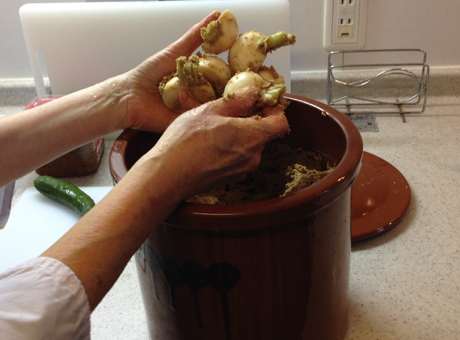
But no hands, because hygiene is extremely important in keeping a nuka-pickle-pot healthy. Nukadoko (pickling bed) can be passed down for generations and as such the one in front of me was easily some 150+ years old. Given that nukadoko is a living organism that requires constant monitoring and attention, it doesn’t come on a surprise that Elizabeth is very cautious.
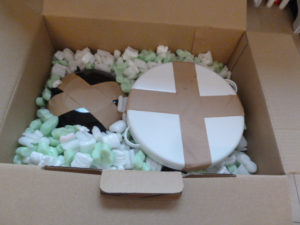
The only one allowed to touch Elizabeth’s nuka pot besides her is her neighbor that takes care of it whenever she is out of town for a long time. Sounds irritating in the beginning, but after having to throw out nuka-pickle-pots that had gone bad three times, I find myself being as careful and restrictive. I even take my nuka-pickle pot with me on vacation or weekend-trips. Is that absolutely necessary? No. There are ways to maintain your nuka-pickle-pot even though you are not around, but as I have Elizabeth’s 150+ years in mine , I am not going to take chances.
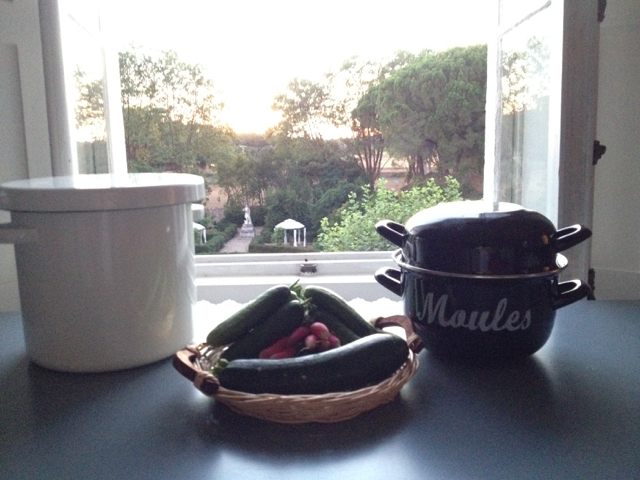
Nuka, Nukadoko and Nuka zuké: What’s the difference?
But before I go on, let me explain a few terms here, so that you don’t get confused:
- Nuka is the Japanese term for rice bran. In Japan, nothing goes to waste and as such, the nuka that is left after polishing rice (e.g. for table rice, sake making etc.) is used as a pickling medium.
- Nuka mixed with water salt and aromatics becomes the pickling medium, called nukadoko.
- The nukadoko is usually kept in a (non-reactive) container, a ‘nuka-pickle-pot’ or nuka-pot and
- the generic term for vegetables, pickled in nukadoko is nuka zuké.
Nuka zuké ferments vegetables in a couple of hours
Nuka zuké is fairly easy and fast compared to other fermented products, but it needs to be mixed by hand to aerate the nukadoko. Yes, everyday! It only takes a few seconds, but you should be willing to commit to this before you start you own nuka-pot at home. Your reward? Cucumbers turned into crisp, savory pickles over night and tart red radishes get enchanted into exhilarant crudités in a couple of hours.
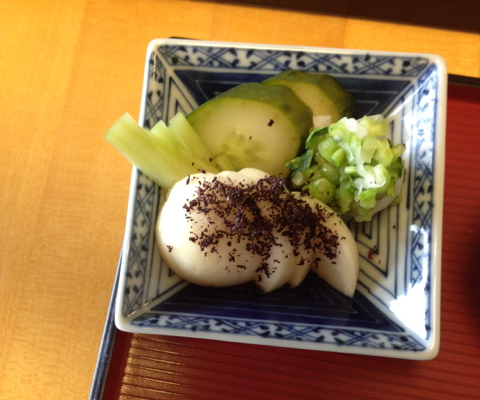
Nukodoko thrives off the bacteria that live on your hands and the vegetable’s skin. They also influence the taste as well as the aromatics that you can put in. So each nukadoko has its unique taste that will constantly change. Generally spoken an aged nukadoko will be more round and smooth than a young one, similar to wine, that’s why nukadoko can be passed down the generations.
Nuka zuké contains brown rice nutrients
Nukadoko is made from nuka – rice bran. The vitamin rich outer layers of rice – undoubtedly nutritious and healthy – would create off flavors in sake and are often unwanted for table rice. So one way to get back some of those nutrients that have been milled away is pickling vegetables in nukadoko. Nowadays it is fairly easy to source nuka either in Asian markets or online (e.g. here or here), but you could also substitute nuka with wheat bran. Wheat bran is lighter and more fluffy. When using wheat bran instead of nuka you should use a little more water and make sure that your pack down your ‘wheat bran-doko’ tightly on your vegetables to ensure contact with the bacteria.
Become a tsukémono addict
Ever since that one sunny autumn day in Tokyo when I smelled and tasted nuka zuké for the first time, I am enamored with it. But while a taste of vegetables pickled in nuka can prise the gates to Tsukémono heaven ajar, making it yourself will fling them open and convert you to the delights of preserving the Japanese way.
For those that are interested to learn how to start a nuka-pot and to handle it properly, how to influence its taste and troubleshooting-strategies to avoid it going bad, subscribe to the newsletter to get the information on the next nuka zuké-workshop delivered directly to your inbox.
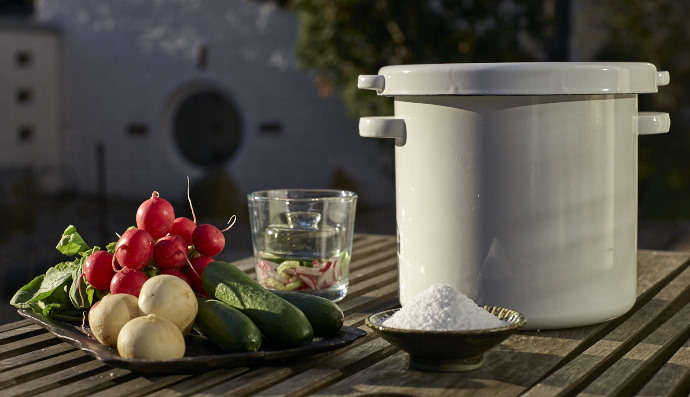
One thought on “Nuka zuké @ home: What is Nuka zuké?”
Comments are closed.